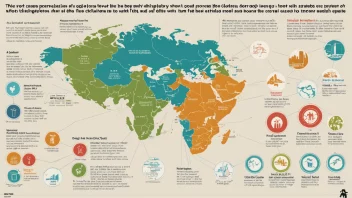As global poverty continues to challenge societies worldwide, innovative solutions are emerging that offer hope and empowerment to those in need. The urgency to address poverty has led to creative approaches that harness technology, community engagement, and collaboration. One such solution is the rise of microfinance, which provides small loans to individuals in impoverished communities. By offering financial services to those who are traditionally excluded from the banking system, microfinance enables individuals to start businesses, invest in education, and improve their quality of life. This approach not only promotes economic growth but also fosters financial independence and resilience.
Technology is playing an increasingly vital role in poverty alleviation. Mobile banking and digital payment systems have revolutionized how individuals in low-income regions access financial services. With the ability to transfer money, pay bills, and receive funds through mobile devices, communities can bypass traditional banking barriers. This technological advancement enhances economic participation and allows individuals to manage their finances more effectively.
Education remains a cornerstone of poverty reduction, and innovative educational programs are paving the way for change. Initiatives that utilize online learning platforms and digital resources are expanding access to quality education in remote areas. By providing flexible learning opportunities, these programs empower individuals to acquire new skills and knowledge, enhancing their employability and potential for economic advancement.
Community-driven initiatives are also proving effective in addressing poverty challenges. When local residents take the lead in identifying their needs and developing solutions, the outcomes are often more sustainable and impactful. Participatory approaches, such as community gardens or cooperative businesses, empower individuals to collaborate and support one another, fostering a sense of ownership and pride. These initiatives can lead to improved nutrition, job creation, and social cohesion within communities.
Moreover, partnerships between governments, non-governmental organizations (NGOs), and the private sector are crucial for creating innovative solutions to poverty. Collaborative efforts can leverage resources, expertise, and networks to implement comprehensive strategies that address the multi-dimensional nature of poverty. By sharing knowledge and aligning goals, stakeholders can create synergies that amplify their impact and reach.
The role of advocacy and policy change cannot be overlooked in the fight against poverty. Grassroots movements and campaigns that raise awareness of poverty issues can influence public opinion and drive policy reforms. By advocating for social justice and equitable resource allocation, communities can hold governments accountable and push for systemic changes that promote long-term poverty alleviation.
Finally, addressing climate change and environmental sustainability is integral to poverty reduction efforts. Initiatives that promote renewable energy, sustainable agriculture, and climate-resilient practices can help communities adapt to environmental challenges while improving their livelihoods. By integrating environmental considerations into poverty reduction strategies, we can create a more sustainable and equitable future.
In conclusion, innovative solutions to combat global poverty challenges are emerging from various sectors and disciplines. By harnessing the power of microfinance, technology, community engagement, partnerships, advocacy, and environmental sustainability, we can work toward a world where poverty is not a permanent condition but an issue of the past. Together, we can inspire change and empower individuals to build brighter futures for themselves and their communities.
Innovative Solutions to Combat Global Poverty Challenges
Explore innovative solutions that are making a difference in the fight against global poverty.






